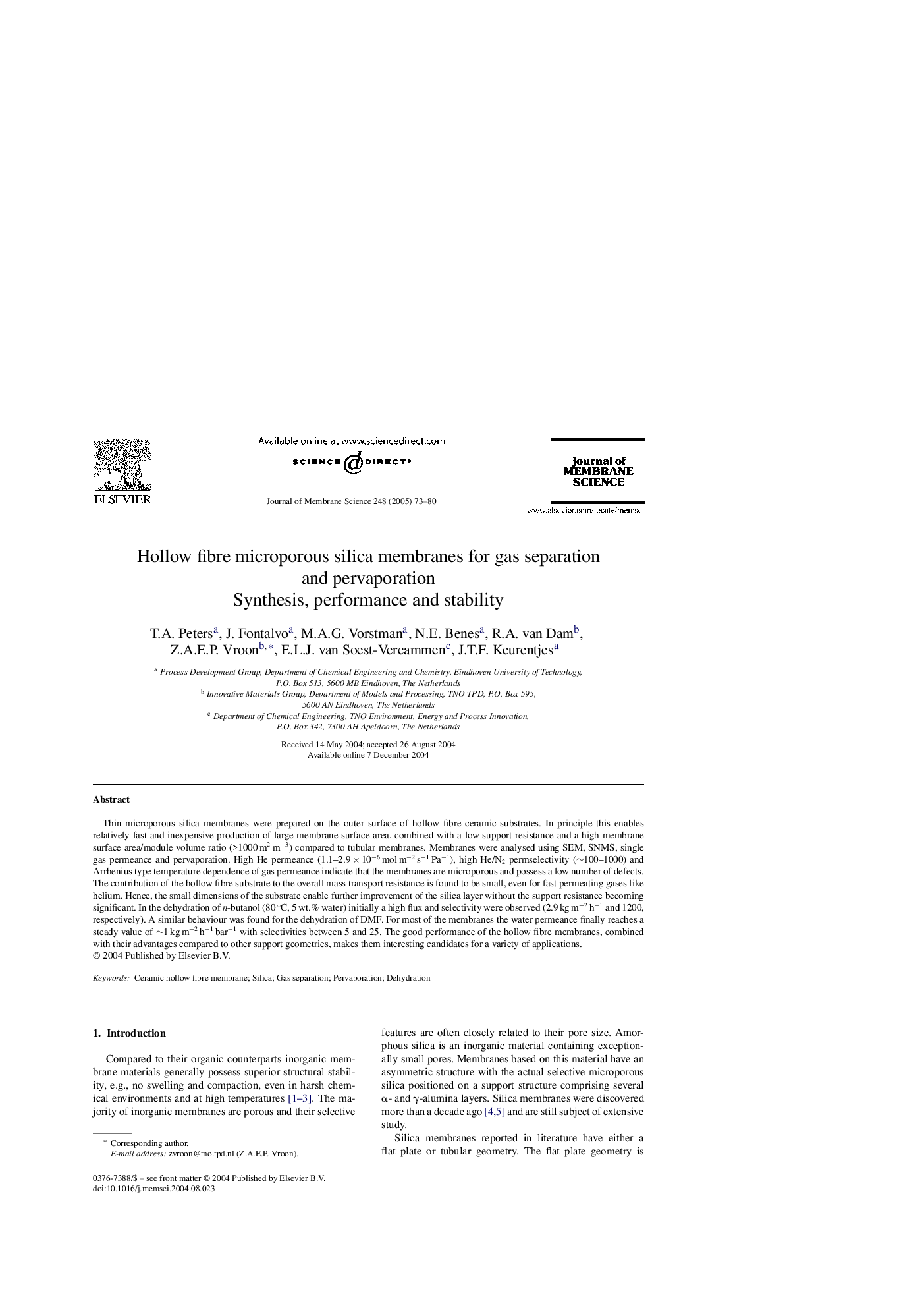| Article ID | Journal | Published Year | Pages | File Type |
|---|---|---|---|---|
| 9685078 | Journal of Membrane Science | 2005 | 8 Pages |
Abstract
Thin microporous silica membranes were prepared on the outer surface of hollow fibre ceramic substrates. In principle this enables relatively fast and inexpensive production of large membrane surface area, combined with a low support resistance and a high membrane surface area/module volume ratio (>1000 m2 mâ3) compared to tubular membranes. Membranes were analysed using SEM, SNMS, single gas permeance and pervaporation. High He permeance (1.1-2.9 Ã 10â6 mol mâ2 sâ1 Paâ1), high He/N2 permselectivity (â¼100-1000) and Arrhenius type temperature dependence of gas permeance indicate that the membranes are microporous and possess a low number of defects. The contribution of the hollow fibre substrate to the overall mass transport resistance is found to be small, even for fast permeating gases like helium. Hence, the small dimensions of the substrate enable further improvement of the silica layer without the support resistance becoming significant. In the dehydration of n-butanol (80 °C, 5 wt.% water) initially a high flux and selectivity were observed (2.9 kg mâ2 hâ1 and 1200, respectively). A similar behaviour was found for the dehydration of DMF. For most of the membranes the water permeance finally reaches a steady value of â¼1 kg mâ2 hâ1 barâ1 with selectivities between 5 and 25. The good performance of the hollow fibre membranes, combined with their advantages compared to other support geometries, makes them interesting candidates for a variety of applications.
Related Topics
Physical Sciences and Engineering
Chemical Engineering
Filtration and Separation
Authors
T.A. Peters, J. Fontalvo, M.A.G. Vorstman, N.E. Benes, R.A. van Dam, Z.A.E.P. Vroon, E.L.J. van Soest-Vercammen, J.T.F. Keurentjes,
